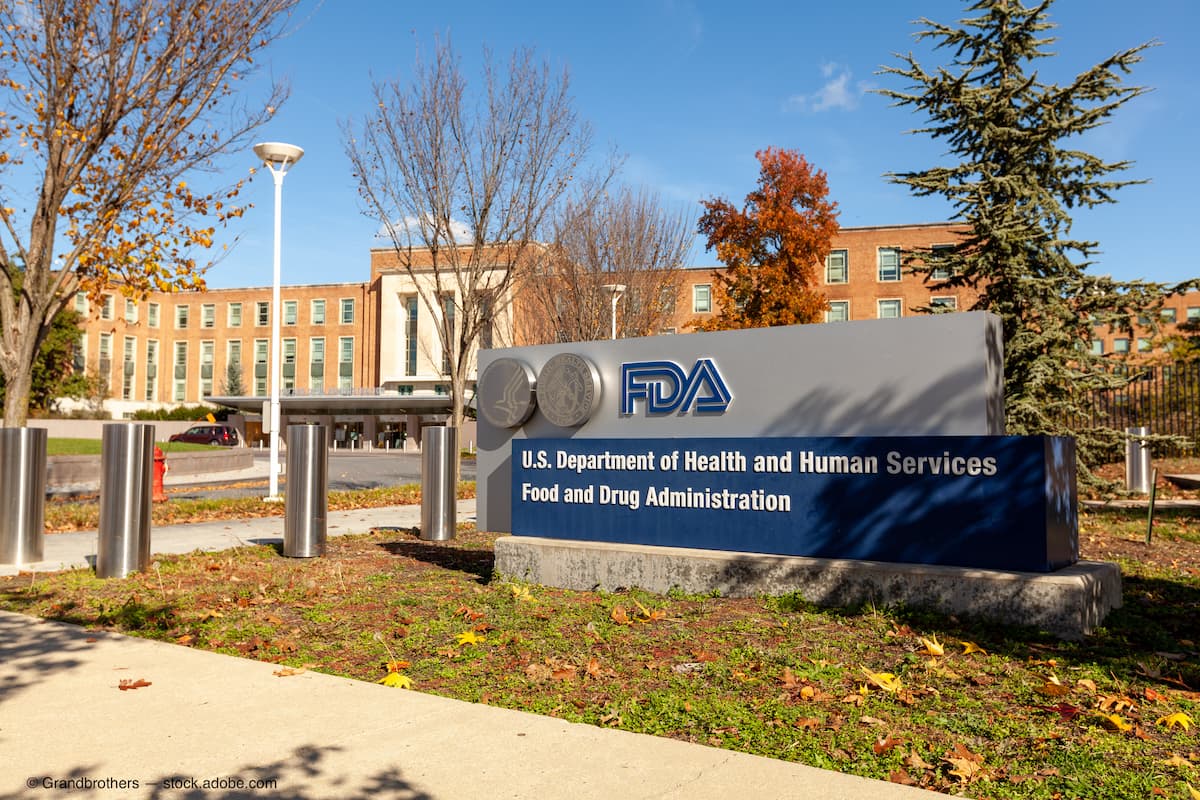FDA approves faricimab-svoa for the treatment of retinal vein occlusion
According to Genentech, RVO is the third indication for Vabysmo, in addition to wet, or neovascular, age-related macular degeneration and diabetic macular edema. The approval is based on two Phase III studies demonstrating early and sustained vision improvements that were non-inferior to aflibercept.
(Adobe Stock / Grandbrothers)

Genentech, a member of the Roche Group, today announced the FDA has approved faricimab-svoa (Vabysmo) for the treatment of macular edema following retinal vein occlusion (RVO).
According to a news release1 from the company, RVO is the third indication for faricimab-svoa, in addition to wet, or neovascular, age-related macular degeneration (AMD) and diabetic macular edema (DME). Together, the three retinal conditions affect around 3 million people in the U.S. and are among the leading causes of vision loss.
Levi Garraway, MD, PhD, Genentech’s chief medical officer and head of Global Product Development, noted in the company's news release that faricimab-svoa provides a treatment option for RVO that can help people preserve and improve their vision, with the added benefit of retinal drying.
“The efficacy and safety profile of Vabysmo has been well established in global clinical trials and is reinforced by a growing breadth of real-world evidence, with hundreds of thousands of people treated,” Garraway said in the news release.
Faricimab-svoa, according to Genentech, is the first and only bispecific antibody approved for the eye.
The FDA approval in RVO is based on positive results from the global Phase III BALATON and COMINO studies that demonstrated monthly treatment with faricimab-svoa provided early and sustained improvement in vision in people with branch and central RVO, meeting the primary endpoint of non-inferior visual acuity gains at 24 weeks compared to aflibercept.2
About the BALATON and COMINO Studies
According to a separate news release earlier this year,2 BALATON (NCT04740905) and COMINO (NCT04740931) are two randomly assigned, multicenter, double-masked, global Phase III studies that evaluated the efficacy and safety of faricimab-svoa compared to aflibercept. For the first 20 weeks, patients are randomly assigned 1:1 to receive 6 monthly injections of either faricimab-svoa (6.0 mg) or aflibercept (2.0 mg). From weeks 24 to 72, all patients receive faricimab-svoa (6.0 mg) up to every 4 months – according to a personalized treatment interval dosing regimen – using a treat-and-extend approach.
The company noted in May the BALATON study was being conducted in 553 patients with branch retinal vein occlusion. The COMINO study was being conducted in 729 patients with central retinal or hemiretinal vein occlusion.
The primary endpoint of each study, according to the release, was the change in best-corrected visual acuity (BCVA) from baseline at 24 weeks. Secondary endpoints include change in central subfield thickness (CST) from baseline over time up to 24 weeks.
Moreover, the release noted that both studies met their primary endpoint, with faricimab-svoa showing non-inferior visual acuity gains compared to aflibercept. The average vision gains from baseline were comparable between the two treatments in both studies. In BALATON, vision gains were +16.9 eye chart letters in the faricimab-svoa arm and +17.5 letters in the aflibercept arm at 24 weeks. In COMINO, vision gains were +16.9 letters in the faricimab-svoa arm and +17.3 letters in the aflibercept arm at 24 weeks.
A secondary endpoint, according to the May news release, showed that faricimab-svoa achieved rapid and robust drying of retinal fluid, as measured by reduction in CST from baseline. In both studies, reductions in CST were comparable across treatment arms. In BALATON, CST reductions from baseline at 24 weeks were 311.4 μm in the faricimab-svoa arm and 304.4 μm in the aflibercept arm. In COMINO, CST reductions from baseline at 24 weeks were 461.6 μm in the faricimab-svoa arm and 448.8 μm in the aflibercept arm.2
The company also noted in its release both studies showed that more faricimab-svoa patients had an absence of blood vessel leakage in the retina compared to aflibercept patients as seen in a pre-specified exploratory endpoint. Blood vessel leakage in the macula may lead to more retinal fluid, which can cause swelling and blurry vision.2
In BALATON, about a third of patients (34%) treated with faricimab-svoa had an absence of macular leakage compared to one-fifth (21%) of aflibercept patients at 24 weeks. In COMINO, the rates were 44% for faricimab-svoa patients versus 30% for aflibercept patients at 24 weeks.
Genentech noted that in both studies, faricimab-svoa’s safety profile was consistent with previous trials. The most common adverse reaction was conjunctival hemorrhage (3%). Safety results proved to be consistent across study arms.2
With the FDA approval for RVO, information has also been added to the Warnings & Precautions section of the US label based on rare post-marketing cases of retinal vasculitis and/or retinal vascular occlusion, typically in the presence of intraocular inflammation. The reported rate of retinal vasculitis with vascular occlusion is 0.06 per 10,000 injections, in line with real-world reported frequencies of other broadly used intravitreal treatments for people living with wet AMD, DME and RVO.1
Faricimab-svoa has approved in more than 80 countries around the world to date for people living with wet AMD and DME, with approximately 2 million doses distributed globally.